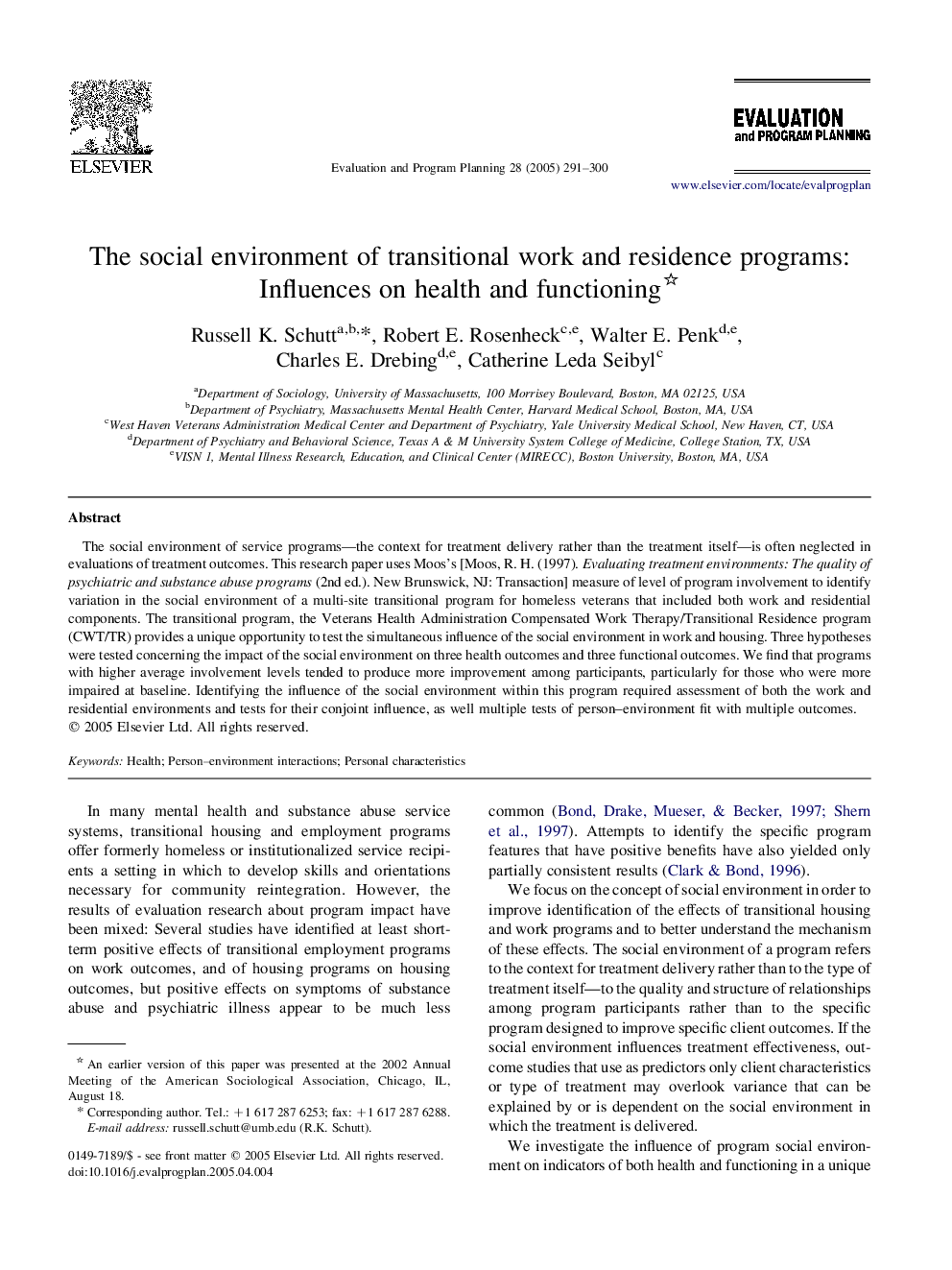| Article ID | Journal | Published Year | Pages | File Type |
|---|---|---|---|---|
| 10298498 | Evaluation and Program Planning | 2005 | 10 Pages |
Abstract
The social environment of service programs-the context for treatment delivery rather than the treatment itself-is often neglected in evaluations of treatment outcomes. This research paper uses Moos's [Moos, R. H. (1997). Evaluating treatment environments: The quality of psychiatric and substance abuse programs (2nd ed.). New Brunswick, NJ: Transaction] measure of level of program involvement to identify variation in the social environment of a multi-site transitional program for homeless veterans that included both work and residential components. The transitional program, the Veterans Health Administration Compensated Work Therapy/Transitional Residence program (CWT/TR) provides a unique opportunity to test the simultaneous influence of the social environment in work and housing. Three hypotheses were tested concerning the impact of the social environment on three health outcomes and three functional outcomes. We find that programs with higher average involvement levels tended to produce more improvement among participants, particularly for those who were more impaired at baseline. Identifying the influence of the social environment within this program required assessment of both the work and residential environments and tests for their conjoint influence, as well multiple tests of person-environment fit with multiple outcomes.
Keywords
Related Topics
Health Sciences
Medicine and Dentistry
Public Health and Health Policy
Authors
Russell K. Schutt, Robert E. Rosenheck, Walter E. Penk, Charles E. Drebing, Catherine Leda Seibyl,
